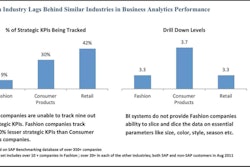
Despite the technology-savvy industry professionals who turn to social platforms for industry news updates or global engagement, the majority of executives and businesses in supply chain have yet to either adopt or find a social media strategy that works for them. And for those business to business (B2B) leaders who do see the benefits and continue their search for the right “social” fit, many come up empty-handed because traditional social media networks—such as Facebook or Twitter—are not built specifically for B2B but rather the business to consumer (B2C) space.
B2B companies will never be able realize the full benefits of social technology until one primary B2B network rises as “the place” for B2B interaction and engagement. For a network to become the destination for communication between buyers and sellers, it must key in on the aspects that bring businesses in supply chain together; provide all players with one network for communication that benefit each of their businesses; and to streamline processes to meet the common goal.
B2B companies come together
Opposite of traditional social media networks, B2B companies instead use a variety of other sites and sometimes even internally-created collaborative tools and platforms in an attempt to keep customers, suppliers and key partners engaged with each other. But the variety in this space equates to inefficiency and low adoption—and let’s face it, measuring return on investment (ROI) for “social” activities can be very difficult.
B2B social networks need to offer more than just the ability to be social—they must give companies a clear reason as to why the company should participate—which is to improve their bottom line. This type of social network must also center on the function that brings businesses together: buying and selling. That’s not to say it should be an e-commerce site with a shopping cart. There are many pre-purchase and post-purchase activities that could benefit both the buyer and the seller.
For example, businesses could largely benefit with the ability to solicit bids right within the network. In the same way that Facebook allows a user to easily find high school classmates, the universal B2B network would easily enable a company to find potential suppliers to fill their exact needs. The network should provide companies with simple tools to request pricing and information; enable suppliers to easily respond to those requests; and enable buyers to effectively evaluate those responses.
Businesses could also streamline the process with automation of references, or ratings and reviews. Why do millions of people purchase from Amazon.com? The ecommerce site allows users to read other consumer reviews, hence, it either further initiates their confidence in a purchase or makes them reconsider. The same need applies to B2B companies. Site references and phone interviews will never go away but not all deals require such rigor. Imagine if you were soliciting bids from three companies and each of those companies had 20 ratings and reviews written about them. The ideal B2B platform should have capabilities that enable buyers and suppliers to rate and review each other. Buyers need to be confident about the suppliers they select and sellers should be able to realize the social benefit by providing good products and services.
Another post-purchase benefit that the network should provide is tools to facilitate effective supplier relationship management (SRM). There is often more value that can be gained for both the buyer and supplier after the purchase is made or the contract is signed. Customer Relationship Management (CRM) software enabled sellers to more effectively manage their customer relationships for years. However, there are limited tools that electronically enable supply chain managers to effectively track and manage their supplier relationships. The B2B network should provide the supply chain tools—like relationship notes tracking and supplier segmentation tools—to more effectively implement their SRM strategies.
Enabling company focus
Unlike mainstream social media, primarily composed of individual profiles where members can connect with each other one on one, a B2B network should revolve around the company, i.e., companies connecting with companies and buyers connecting with sellers.
Company profiles—not user profiles—should be the showcase. When posting, users are representing their company on a B2B network versus not themselves. As a result, company profiles should highlight products and services, company news and team members. A user’s profile should be built around what that individual’s responsibilities are within the company—let LinkedIn handle the user’s education and experience.
Let’s not forget the social aspect
What is it about the social aspect of the network itself that can provide value to the supply chain? Looking back at a past position I held in the supply chain, I was responsible for 700 suppliers, 5,000 items and over $200 million in annual spend—and it was just me. I had four to five supplier meetings every day and you can likely imagine the number of phone calls and e-mails. Not surprisingly, every conversation had little variation:
Supplier: “We have a new product.”
Buyer: “We have a process to evaluate your new product.”
Supply chains are faced with the problem of being unable to stay up-to-date with all of the key information their suppliers want them to know. In my past role, it was impossible for me to interact and always stay up-to-date with my 700 suppliers through traditional methods as phone, e-mail and meetings.
Imagine if all 700 of my suppliers were in my B2B network and I could target my message to all of them with one post regarding the process to get their product approved at my company. Instantly, all 700 suppliers would be given the same message. Then, imagine if they could comment on my post with additional questions to which I could respond to, and to which all 700 would be privy to. The amount of time that could be reduced would be significant—not to mention there is tremendous value for myself and the suppliers in knowing that they all received the message at the same time, with the same fair method. Now, step into the shoes of one of those 700 suppliers. They likely also have hundreds of customers and a similar goal to get the right sales message in front of each of their customers without having to repeat the same information over and over.
Of course, in some regulated industries like healthcare, there is significant concern and caution regarding how the message is delivered because of their potential liability for false claims. But consider the value if the supplier had all of their customers on that same social network. They could completely control and target their message to all of their customers in simple posts about the launch of a new service; advancement in an existing product; or a compelling news story about their company.
Another benefit to having a social supply chain is the ability to stay up-to-date with each other without formally interacting. Before Facebook, how often did you keep in touch with all of those “online” friends? Most of them you probably hadn’t seen or heard from in years. But with Facebook, you see daily or weekly updates from them and they are able to see the same from you.
An additional value for the social network in the supply chain is the concept of crowdsourcing. In crowdsourcing, problems are broadcast to an unknown group of solvers in the form of an open call for solutions. The group, also known as the crowd, submits solutions. B2B companies are often faced with many complex problems or tasks that could greatly benefit from crowdsourcing via a social network.
For example, buyers may say “I need to standardize a specific category of products. What’s the best way to go about it?” They may also question, “Should I in-source or out-source this service? What are some of the best ways to measure success in spend management?”
On the reverse side, sellers may ask, “Where do you think the market will be in five years for this category? What do you think the biggest risk is regarding our new product? What do you see as the largest benefit?”
Questions like these are asked by B2B companies every day, generally via e-mail, face-to-face meetings or sometimes even focus groups. And while each of those methods can provide value, crowdsourcing via a B2B social network can increase the volume of responses, introduce competition and enable a faster solution. Thus, the value of utilizing “the crowd” can save you significant time and more effectively point you to the best solution.
The social supply chain
There are key characteristics that an effective B2B network should have in order to obtain large-scale adoption: A focus on what brings B2B together; a focus on the company instead of the user; and, of course, the social aspect of it all. Without these value propositions, the social adoption waiting game in the B2B supply and demand chain will only continue.
Curtis McEntire is Chief Executive Officer and Founder of Mazree, an online business collaboration network, where he is responsible for managing the company’s overall execution and strategic direction. He holds a Bachelor of Science degree in Finance from the University of Utah and an MBA in Healthcare Management from Western Governors University.

















